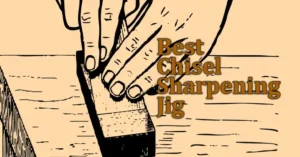Using a wood chisel might seem simple, just press and carve, right? But like any tool in woodworking, chisels require proper technique, the right type, regular maintenance, and an understanding of wood behavior. Beginners often make common but avoidable errors that can lead to injury, damaged tools, or ruined woodwork.
Here, we’ll walk you through the 5 most critical mistakes to avoid when using a wood chisel, plus bonus insights and best practices that will help you level up your skills with confidence.

Table of Contents
Mistake 1: Misunderstanding Your Chisel
Not All Chisels Are Created Equal
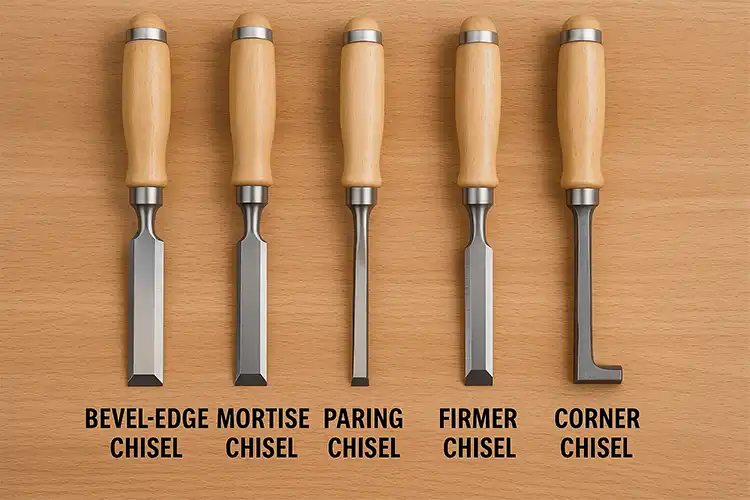
One of the biggest mistakes to avoid when using a wood chisel is not knowing the purpose of each type. A beginner might think all chisels serve the same function, but they don’t.
Common Chisel Types:
- Bevel-Edge Chisel: Great for general use and fine woodworking.
- Mortise Chisel: Designed to cut mortises, for heavy-duty chiseling.
- Paring Chisel: Thin and long for precision cuts with hand pressure only.
- Firmer Chisel: Strong and straight-edged, good for deeper cuts.
- Corner Chisel: Used to clean out corners in mortises.
Why This Matters:
- Using the wrong chisel can break your blade or damage your workpiece.
- Each chisel type has a specific purpose and load it can handle.
- It leads to safer, more precise, and more enjoyable woodworking.
Mistake 2: Using a Dull Chisel
Sharp Edges Are Safer and More Effective
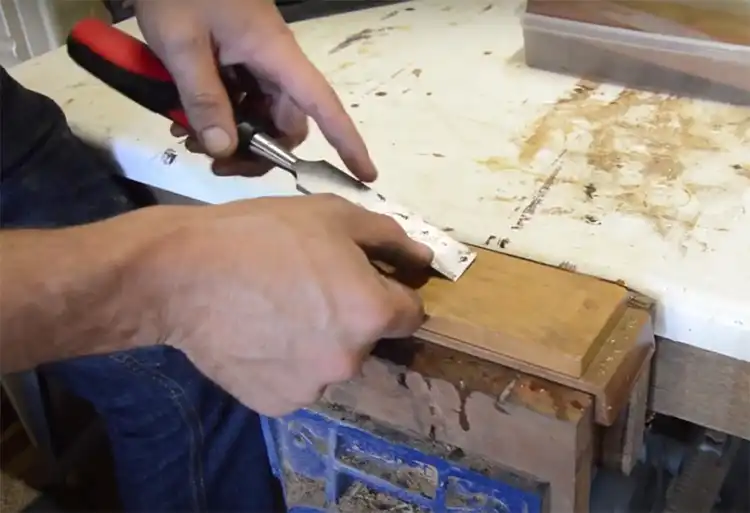
It might sound counterintuitive, but dull tools are more dangerous than sharp ones. Beginners often skip sharpening because they’re eager to get started. But skipping this step can lead to slips and injuries.
Signs Your Chisel Is Dull:
- It crushes wood fibers instead of slicing them.
- You apply more force and feel resistance.
- The chisel leaves tear-outs and ragged edges.
Dangers of a Dull Chisel:
- Requires more pressure, increasing the risk of losing control.
- Can ruin detailed work.
- May chip or break more easily.
How to Avoid This Mistake:
- Learn how to sharpen with a honing guide, whetstone, or diamond plate.
- Always test your edge before use.
- Make sharpening a part of your routine, not an afterthought.
Mistake 3: Unsafe Hand and Body Positioning
Your Hands Should Never Be in the Danger Zone
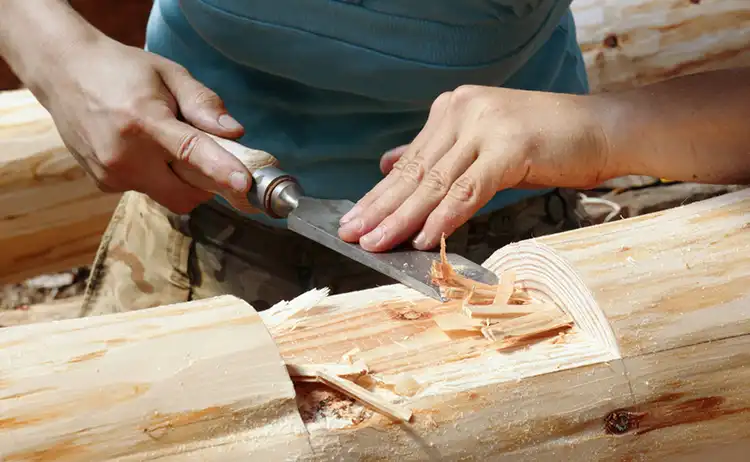
A wood chisel is not a forgiving tool. One slip can lead to deep cuts. That’s why your hand position and body stance matter.
Common Positioning Mistakes:
- Holding the workpiece in your hand while chiseling.
- Place your hand in front of the blade’s direction.
- Standing off-balance while pushing the tool.
Safer Techniques:
- Always clamp your workpiece securely.
- Use both hands: one for guiding, one for pressure.
- Keep fingers behind the cutting edge, never in front.
- Chisel away from your body—never toward it.
Mistake 4: Ignoring the Grain Direction
Work With the Grain—Not Against It
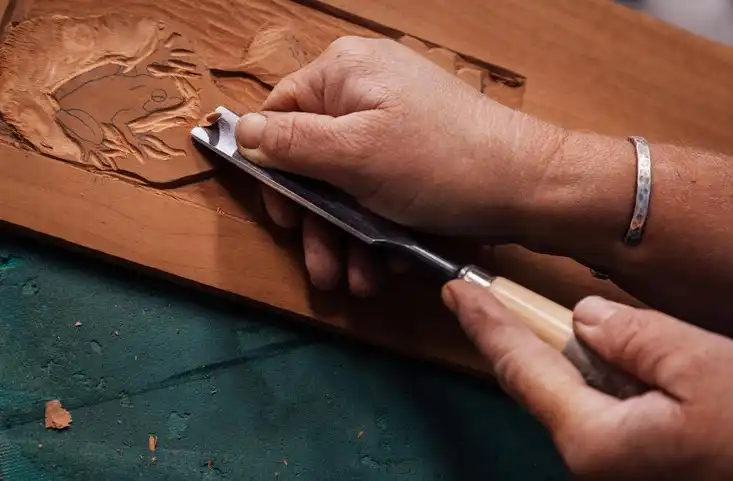
Wood has a natural grain direction. Failing to recognize this is a key mistake to avoid when using a wood chisel. Chiseling against the grain leads to tear-out, rough surfaces, and splintering.
Grain Mistakes Beginners Make:
- Not checking the wood grain direction before starting.
- Pushing the chisel forcefully through the end grain.
- Attempting deep cuts across the grain.
Best Practices:
- Study the grain pattern, go slow until you understand it.
- Always chisel with the grain whenever possible.
- For tight areas, take small paring cuts instead of forcing the chisel.
Mistake 5: Using the Wrong Hammer
Don’t Let Your Mallet Break Your Chisel
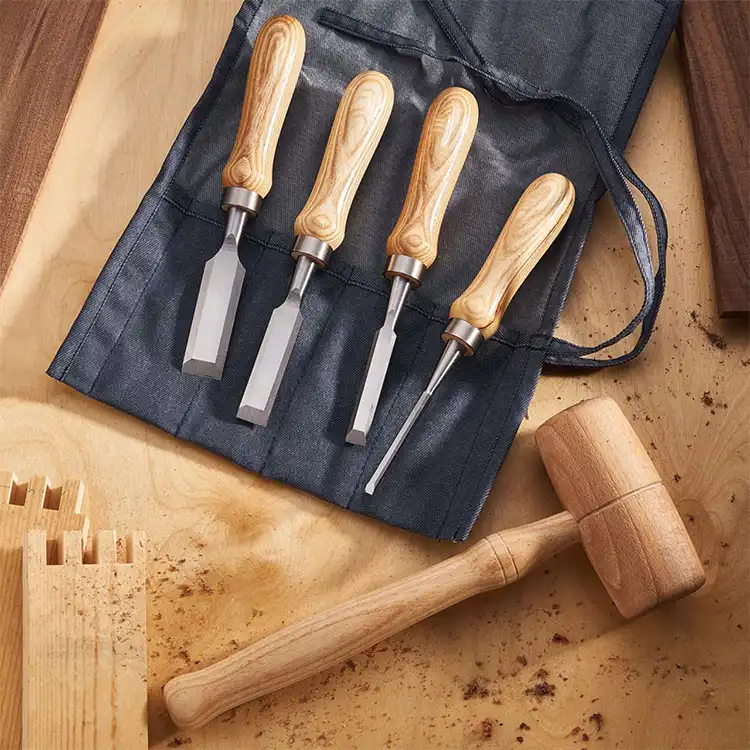
Many beginners assume that any hammer will do. However, using a metal hammer with a wood chisel—especially one with a wooden handle—can cause damage quickly.
What Can Go Wrong:
- Metal hammer heads can crack or mushroom wooden handles.
- They transfer too much shock to the chisel and your hands.
- Long-term use may break the tang (the part of the blade inside the handle).
What You Should Use:
- Wooden Mallet: Classic and soft on the tool.
- Rubber Mallet: Good for light taps.
- Nylon/Plastic-Head Mallets: For modern chisels with reinforced handles.
🧰 Bonus Section: Neglecting Chisel Maintenance
A Little Care Goes a Long Way! Even if you avoid all major usage mistakes, skipping maintenance will shorten your chisel’s life span and compromise its performance.
Poor Maintenance Habits:
- Leaving chisels dirty or covered in wood sap.
- Letting moisture sit on the blade (rust!).
- Throwing them in a drawer unprotected.
Simple Maintenance Tips:
- Clean after every use—wipe with a rag.
- Apply a light coat of oil on the blade to prevent rust.
- Store in a tool roll, chisel rack.
- Inspect edges often and re-sharpen as needed.
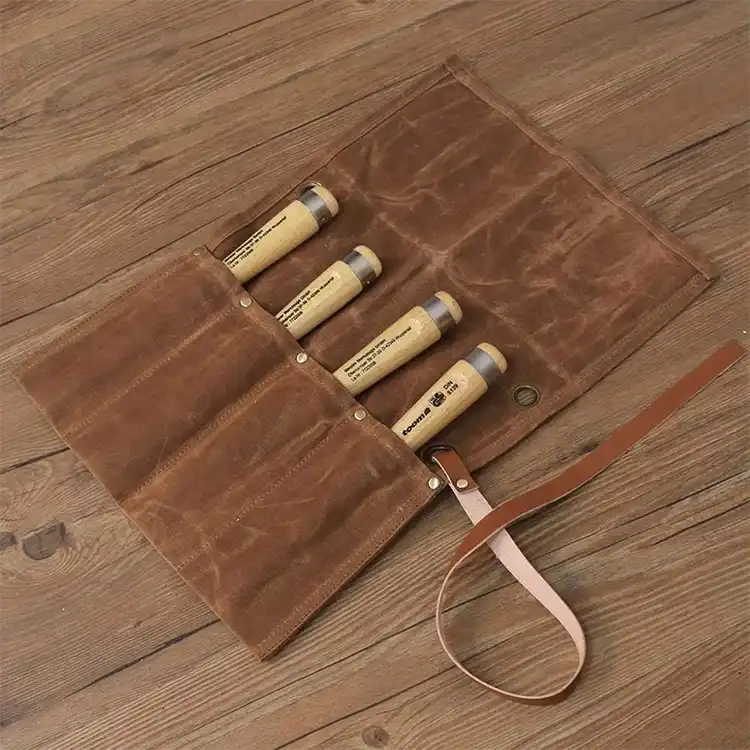
Final Thoughts: Master the Basics, Then Build Your Craft
Smart Chiseling Starts with Avoiding Mistakes
Whether you’re a hobbyist building birdhouses or an aspiring furniture maker, your success with a wood chisel depends on knowing what not to do. Mistakes to avoid when using a wood chisel are surprisingly common, especially for beginners, but with a bit of awareness and regular practice, you can easily steer clear of them. Avoiding these slip-ups will not only keep you safe but also help you build better, more precise projects with confidence.
Stay patient, respect your tools, and keep learning. Woodworking isn’t just a craft—it’s a journey worth taking.
FAQs: Mistakes to Avoid When Using a Wood Chisel
Q: What should you avoid doing when using a chisel?
A: Don’t use it on metal or stone. Avoid hitting it with a metal hammer. Don’t use it if it’s dull or cracked, and don’t put your hands near the blade.
Q: How do you use a wood chisel safely?
A: Keep it sharp and cut away from your body. Use both hands if needed, and tap with a mallet, not your hand.
Q: What are the safety rules for chisels?
A: Wear safety glasses, work on a steady surface, and store the chisel with a blade cover. Keep it clean and sharp.
Q: Should you wear gloves when using a chisel?
A: No, gloves can slip and reduce control. It’s safer without them.
Q: What safety device is required when using a chisel on wood?
A: Use safety glasses and a clamp or vise to hold the wood steady.
Q: What are the injuries of chisels?
A: You can get cuts, splinters, bruises, or eye injuries from flying chips.
Check out our guide:
- Wood Chisels 101: How to Choose, Use & Buy Like a Pro.
- Best 10 Milwaukee Cutting Tools: The Perfect Companion for Your DIY Projects
- The 5 Best Makita Rotary Hammer: Dominate Your Projects 2024
- 14 Different Types of Bricklaying Tools (How to Use Them) in 2024
- 33 Different Types of Wrenches in the USA | How to Use Them?


